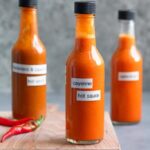Understanding nutrition labels can be tricky, especially when it comes to sugar. You see grams listed under sugars and might wonder what that really means in everyday measurements. While nutrition facts labels are based on grams, most of us think about cooking and eating in terms of teaspoons, tablespoons, and cups. If you’ve ever stared at a nutrition label trying to figure out just how much sugar you’re actually consuming, you’re not alone. This guide will demystify sugar measurements, focusing on a simple conversion: how many grams of sugar are in a teaspoon?
Essentially, grasping this conversion empowers you to make informed choices about your sugar intake and navigate nutrition information more effectively. Let’s break down the sweet science.
When you examine the nutrition facts label on your favorite foods and drinks, carbohydrates are always listed. Within the carbohydrate category, you’ll find “Sugars,” which includes both naturally occurring sugars and added sugars. Naturally occurring sugars are found inherently in foods, like fructose in fruit and lactose in milk. On the other hand, added sugars are those incorporated during food processing or preparation. These culprits go by many names, including white sugar, brown sugar, honey, corn syrup, and more. It’s the total amount of sugars, including both types, that is listed in grams on the nutrition label.
Image: A package of Domino Sugar, highlighting the nutrition facts label which indicates 4 grams of sugar per teaspoon serving.
Here’s the key to simplifying sugar measurements: 4 grams of sugar is approximately equal to one teaspoon. Nutrition labels actually round down slightly, as technically 4.2 grams is a more precise equivalent to a teaspoon. However, for practical purposes and label reading, using 4 grams as your benchmark is perfectly acceptable and widely used.
This conversion is incredibly useful. Instead of trying to visualize grams, you can translate that number into teaspoons – a measurement you likely use daily in your kitchen. Imagine seeing “20 grams of sugar” on a label. By dividing 20 by 4, you quickly realize that’s about 5 teaspoons of sugar. Suddenly, the sugar content becomes much more tangible and easier to understand.
Michigan State University Extension and other health organizations emphasize this gram-to-teaspoon conversion as a valuable tool for visualizing sugar intake. It helps individuals better understand the amount of “empty calories” they consume from sugary foods and beverages, guiding them toward healthier dietary choices. Empty calories are calories that provide minimal nutritional benefit, and excessive intake of added sugars is a significant source of these.
Let’s illustrate this with a common example: sweetened beverages. Drinks like soda, energy drinks, and sweetened coffees can be surprisingly high in added sugars. Consider the following examples based on different serving sizes of a sweetened beverage:
| Serving Size | Calories | Sugars (grams) | Conversion (teaspoons) |
|---|---|---|---|
| 8 ounces (1 cup) | 94 | 26 grams | 6.5 teaspoons |
| 12 ounces (1.5 cups) | 140 | 39 grams | 10 teaspoons |
| 20 ounces (2.5 cups) | 233 | 65 grams | 16.25 teaspoons |
As you can see, even a moderate 20-ounce sweetened beverage can pack over 16 teaspoons of sugar! Visualizing this amount – imagine physically spooning 16 teaspoons of sugar into a glass – can be a real eye-opener. Beverages are often a major contributor to added sugar intake without us even realizing it.
The Dietary Guidelines for Americans https://www.dietaryguidelines.gov/ recommend limiting calories from added sugars. The nutrition facts label, as provided by the U.S. Food and Drug Administration (FDA) https://www.fda.gov/food/new-nutrition-facts-label/how-understand-and-use-nutrition-facts-label, is your primary tool for identifying these added sugars and making informed decisions. By using the simple 4 grams to 1 teaspoon conversion, you can translate the grams of sugar listed into a more understandable measurement.
To reduce your sugar intake, consider these practical steps:
- Read Nutrition Labels: Always check the nutrition facts label for the “Sugars” content in grams.
- Convert to Teaspoons: Divide the grams of sugar by 4 to understand the teaspoons per serving.
- Choose Unsweetened or Low-Sugar Options: Opt for water, unsweetened tea or coffee, and foods with no added sugars whenever possible.
- Be Mindful of Beverages: Sweetened drinks are a major source of added sugars. Choose water, unsweetened beverages, or dilute sugary drinks with water.
- Compare Products: Use nutrition labels to compare different brands and choose options with lower sugar content.
Grams and teaspoons of sugar might seem like small units, but they accumulate quickly throughout the day. By understanding the conversion of grams to teaspoons, you equip yourself with the knowledge to monitor your sugar intake, make healthier food choices, and work towards your nutritional goals. This simple conversion is a powerful tool in your journey to a healthier lifestyle.
